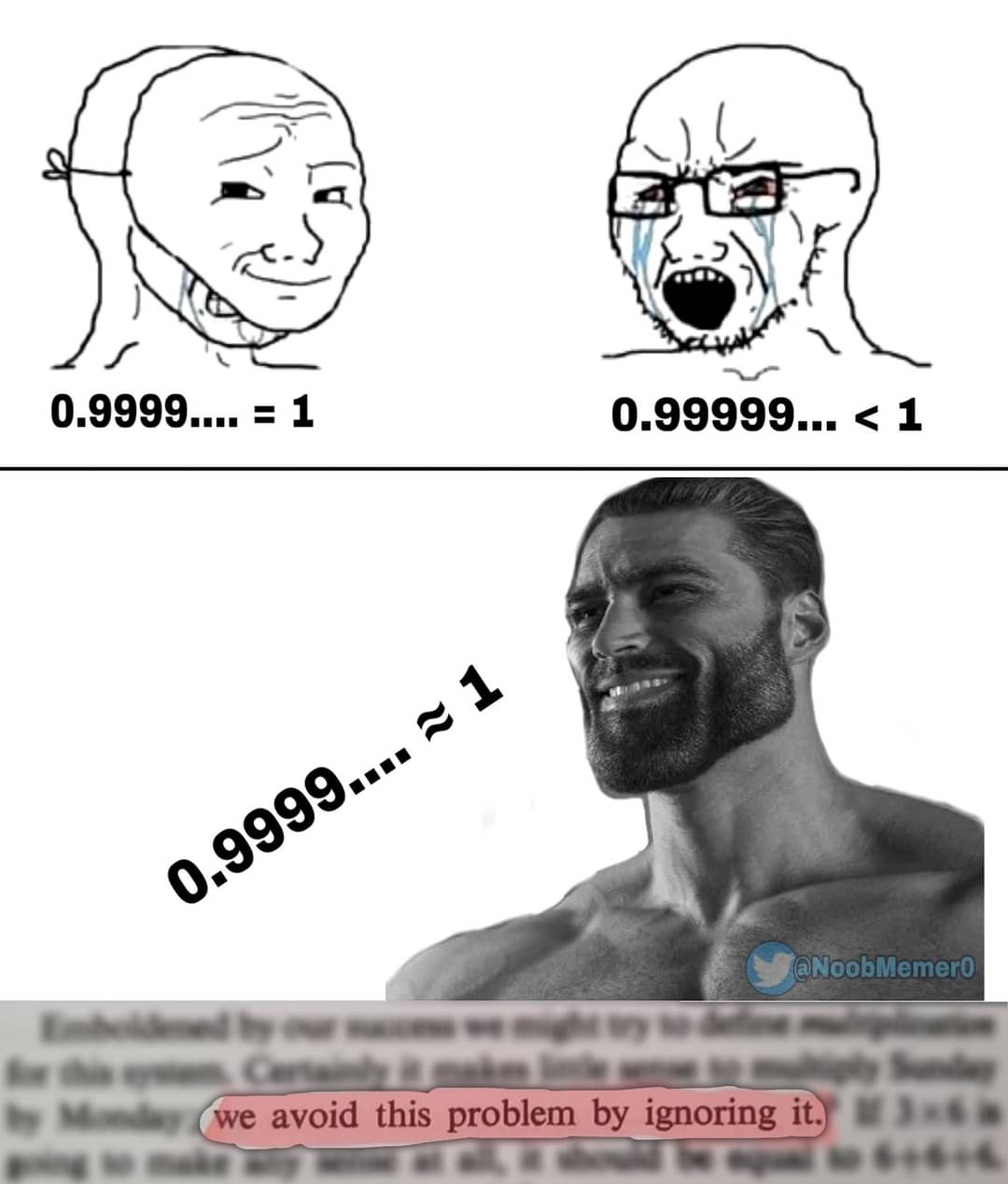this post was submitted on 27 Jun 2024
800 points (95.1% liked)
Science Memes
11597 readers
1084 users here now
Welcome to c/science_memes @ Mander.xyz!
A place for majestic STEMLORD peacocking, as well as memes about the realities of working in a lab.

Rules
- Don't throw mud. Behave like an intellectual and remember the human.
- Keep it rooted (on topic).
- No spam.
- Infographics welcome, get schooled.
This is a science community. We use the Dawkins definition of meme.
Research Committee
Other Mander Communities
Science and Research
Biology and Life Sciences
- [email protected]
- [email protected]
- [email protected]
- [email protected]
- [email protected]
- [email protected]
- [email protected]
- [email protected]
- [email protected]
- [email protected]
- [email protected]
- [email protected]
- [email protected]
- [email protected]
- [email protected]
- [email protected]
- [email protected]
- [email protected]
- [email protected]
- [email protected]
- [email protected]
- [email protected]
- [email protected]
- [email protected]
- !reptiles and [email protected]
Physical Sciences
- [email protected]
- [email protected]
- [email protected]
- [email protected]
- [email protected]
- [email protected]
- [email protected]
- [email protected]
- [email protected]
Humanities and Social Sciences
Practical and Applied Sciences
- !exercise-and [email protected]
- [email protected]
- !self [email protected]
- [email protected]
- [email protected]
- [email protected]
Memes
Miscellaneous
founded 2 years ago
MODERATORS
you are viewing a single comment's thread
view the rest of the comments
view the rest of the comments

2/9 = 0.222... 7/9 = 0.777...
0.222... + 0.777... = 0.999... 2/9 + 7/9 = 1
0.999... = 1
No, it equals 1.
Sure, when you start decoupling the numbers from their actual values. The only thing this proves is that the fraction-to-decimal conversion is inaccurate. Your floating points (and for that matter, our mathematical model) don't have enough precision to appropriately model what the value of 7/9 actually is. The variation is negligible though, and that's the core of this, is the variation off what it actually is is so small as to be insignificant and, really undefinable to us - but that doesn't actually matter in practice, so we just ignore it or convert it. But at the end of the day 0.999... does not equal 1. A number which is not 1 is not equal to 1. That would be absurd. We're just bad at converting fractions in our current mathematical understanding.
Edit: wow, this has proven HIGHLY unpopular, probably because it's apparently incorrect. See below for about a dozen people educating me on math I've never heard of. The "intuitive" explanation on the Wikipedia page for this makes zero sense to me largely because I don't understand how and why a repeating decimal can be considered a real number. But I'll leave that to the math nerds and shut my mouth on the subject.
No number is getting converted, it's the same number in both cases but written in a different representation. 4 is also the same number as IV, no conversion going on it's still the natural number elsewhere written
S(S(S(S(Z)))). Also decimal representation isn't inaccurate, it just happens to have multiple valid representations for the same number.Good then that 0.999... and 1 are not numbers, but representations.
Lol I fucking love that successor of zero